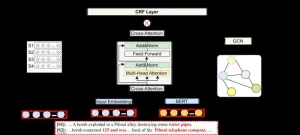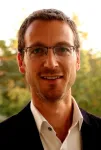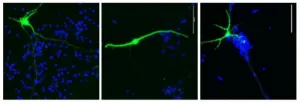(Press-News.org) By Christie Loh
SMU Office of Research – When his parents heard that he had won an award at his workplace, they were naturally delighted, showering their son with a confetti of questions like what the prize was for, whether there was a formal ceremony, and that he must keep up the good work. Indeed, Monit Sharma is well aware that as encouraging as the SMU Research Staff Excellence Award is, the professional road he is on calls for both hard work and stamina.
The 23-year-old is a Research Engineer at SMU’s School of Computing and Information Systems (SCIS), and among the campus’s handful of researchers focused on quantum computing. That is a topic that befuddles most – while singing to the hearts of an elite few like Sharma, who received the research award – which recognises “significant contributions by outstanding members of our research staff community who worked alongside our faculty to conduct high quality research that additionally creates positive impact on our society” – within two years of joining the university.
In late 2022, Sharma left his home country of India for Singapore after successfully applying for the SMU research position. He knew of the opening only because SMU’s Professor of Computer Science Lau Hoong Chuin had emailed him out of the blue after reading his postings on GitHub, a web-based platform for users to share code and collaborate. At the time, Sharma had graduated just a few months from the Indian Institute of Science Research Education, Mohali, with a dual Bachelor’s and Master’s Degree in Physics. Coupled with his minor in Mathematics and in Computer Science, he could wrap his head around quantum computing and enter the buzzing industry.
Quantum for the real world
Governments and tech companies have been pouring billions of dollars into quantum computing since the 1980s when the technology involving ultra-tiny complex devices called qubits promised ultra-fast processing speeds that can trump even the best classical (that is, non-quantum) supercomputers. That kind of power is expected to be able to solve complex problems related to all facets of living, including the environment, medicine, finance and logistics. It is this dazzling potential that has triggered a race among tech companies and governments to build a quantum computer that is stable enough to perform meaningful tasks like classical computers can. That is the hardware side. Concurrently, those on the software side are crafting algorithms for quantum computers.
In Sharma’s case, he has been trying to use quantum algorithms to solve real-world supply chain issues. His findings were published last year in two papers that were presented at a top quantum conference. A third paper, which studied inventory management, incorporated actual data provided by IBM Manufacturing Solutions Singapore to find out the quantity of parts it should order from each supplier based on their respective reliability. This study’s quantum algorithm results were closely aligned with a classical optimisation method, thereby validating quantum computing’s practical applicability.
“All this work is like proof of concept,” Sharma, who was the lead author for the three papers in collaboration with Professor Lau, said in an interview with the Office of Research. They plan to submit the third paper, which is titled “Quantum Monte Carlo methods for Newsvendor problem with Multiple Unreliable Suppliers”, for publication this year.
QEP2.0
Work on all three papers was carried out as part of the Singapore National Research Foundation’s (NRF) Quantum Engineering Programme (QEP) 2.0. Under this scheme, a grant was awarded to SMU via the National Quantum Computing Hub for a two-year project titled “Optimizing Supply Chain Resilience with Quantum Sampling”. The need to strengthen supply chain capabilities came to the fore with the Covid-19 global outbreak, and quantum computing has been hailed as a major tool for simulating complex what-if scenarios and minimising cost and risk.
Sharma found the experience of working on the QEP2.0 project “incredibly rewarding”, as he had the opportunity to collaborate with renowned researchers in the field: One was Dr Rudy Raymond, who was Quantum Researcher at IBM when he co-authored two of the papers with Sharma and has since joined JPMorgan Chase as Executive Director of its Global Technology and Applied Research division; and Dr Stefan Woerner, Principal Research Scientist and Manager of Quantum Computational Science at IBM Research Europe – Zurich.
On home base, Professor Lau was “an excellent mentor throughout the project”, providing his guidance and expertise in Operations Research, said Sharma.
The reality of quantum’s readiness
On most days of the week, you will find Sharma in the SCIS block within a quiet room divided up by grey desk partitions, sharing the open-plan workspace with doctoral students and other researchers. He is the one at the end of the row near the glass windows, with two computer screens on a tabletop with no clutter save a few anime figurines. That is where he writes code and runs quantum algorithms on a Cloud platform. And where he has seen first-hand that for all its dazzling potential, quantum computing at present is not yet able to tackle real-life, large-scale scenarios.
“I think it will take at least two decades for the hardware to be at a good level so that you can at least test decent-sized problems,” he said.
In Sharma’s test runs of quantum versus classical algorithms, it has been classical computing that consistently comes out tops. Sharma will be formalising his comparative study in an upcoming paper, where he uses the best quantum algorithms produced so far by the community and himself to solve benchmark problems that have been proven to be hard to solve by classical computing, and then comparing his results with classical results.
He also believes in being open to the possibility of using “hybrid solutions” that incorporate the best parts of both classical and quantum computing.
Sharma has what he calls a “pragmatic outlook” on quantum’s capabilities.
“I think it's critical to focus on incremental progress, communicate responsibly about what quantum can and cannot do today,” he said. “Achieving quantum advantage – or more ambitiously, quantum supremacy for practical tasks – is a marathon, not a sprint.”
END
Quantum computing “a marathon, not a sprint”
2025-02-28
ELSE PRESS RELEASES FROM THIS DATE:
Large population study identifies long-term health risks after COVID-19 hospitalization
2025-02-28
A nationwide study has revealed that survivors of COVID-19 hospitalization face an increased risk of death or organ-related disorders for up to two-and-a-half years after discharge.
Published today in Infectious Diseases, the study of nearly 64,000 French residents provides valuable insights into the long-term health effects of COVID-19 and emphasises the need for continued healthcare and monitoring for people who have been hospitalised with SARS-CoV-2 infection.
“These findings are a stark reminder of the far-reaching impact of COVID-19, which extends far beyond the initial infection,” says lead author Dr Sarah Tubiana, who specializes ...
Element relational graph-augmented multi-granularity contextualized encoding for document-level event role filler extraction
2025-02-28
Document-level Role Filler Extraction exhibits a wide range of application value in natural language processing, including information retrieval, article summarization and trends analysis of world events. Existing document-level event role filler extraction methods face challenges in contextual modeling of long texts and ignore the explicit dependency relationships between event arguments displayed in long texts.
To solve the problems, a research team led by Zhengtao YU published their new research on 15 Feb 2025 in Frontiers of Computer Science co-published by Higher Education Press and ...
Employee burnout can cost employers millions each year
2025-02-28
New York, NY | February 27, 2025: Employee burnout is likely costing companies millions of dollars each year, ranging from approximately $4,000 to $21,000 per employee in the U.S., according to a study published in the American Journal of Preventive Medicine. That means a 1,000-employee company in the U.S. would on average be losing about $5 million annually. These estimates are based on a computational simulation model developed by the Public Health Informatics, Computational, and Operations Research (PHICOR) team based at the CUNY Graduate ...
The cost of domestic violence to women's employment and education
2025-02-28
A new report reveals how domestic violence impedes women’s employment, often forcing them out of the workforce altogether. In many cases they work fewer hours, for less pay, than employed women who have not experienced domestic violence.
This ‘employment gap’ can be as large as 9.4 per cent: 72 per cent of women who have endured economic abuse in the past five years are in employment compared with 81.4 per cent of women who have not been subject to such abuse.
The report, The Cost of Domestic Violence to Women’s Employment and Education, draws on data that enables, for the first time, a quantification of the employment and educational ...
Critical illness more common than expected in African hospitals - low-cost treatments offer hope
2025-02-28
One in eight patients in hospitals in Africa is critically ill, and one in five of the critically ill die within a week, according to a new study in The Lancet. The researchers behind the largest study of critical illness in Africa to date conclude that many of these lives could have been saved with access to cheap life-saving treatments.
Being critically ill means having severely affected vital functions, such as extremely low blood pressure or low levels of oxygen in the blood. In the new study, researchers show that one in eight patients in African hospitals, 12.5 percent, is in this condition. ...
How our lungs back up the bone marrow to make our blood
2025-02-27
Red blood cells carry oxygen from the lungs to every other organ, and blood-forming stem cells must make about 200 billion new red blood cells each day to keep the oxygen flowing.
For many years, scientists assumed that blood production took place in the bone marrow. But now, researchers at UCSF are showing it’s also happening in the lungs.
They found hematopoietic stem cells (HSCs) in human lung tissue that make red blood cells, as well as megakaryocytes, which produce the platelets that form blood clots. The findings appear Feb. 27 in Blood.
The work, which was supported by the National Heart, Lung, and Blood Institute ...
Fat transport deficiency explains rare childhood metabolic crises
2025-02-27
Researchers studying a protein linked to a rare, severe disease have made a discovery that sheds light on how cells meet their energy needs during a severe metabolic crisis. The findings could lead to new treatments for the disease and open new avenues of research for other conditions involving impaired fat metabolism.
When scientists at the Centre for Genomic Regulation (CRG) in Barcelona first identified a handful of protein-coding genes called TANGO in 2006, they had no idea that one of them, TANGO2, would eventually be linked to a life-threatening ...
Remote work “a protective shield” against gender discrimination
2025-02-27
February 27, 2025
Remote work “a protective shield” against gender discrimination
Survey of more than 1000 women shows incidence higher on-site versus out of the office
Toronto - Having staff physically in the workplace benefits companies and employees through stronger team collaboration and informal mentorship.
But as organizations continue to corral employees back into the office, they should recognize that women pay a price through increased exposure to gender discrimination, says a new study from the University of Toronto’s Rotman School of Management.
In ...
How air pollution and wildfire smoke may contribute to memory loss in Alzheimer’s disease
2025-02-27
LA JOLLA, CA—Air pollution contributes to nearly 7 million premature deaths each year, and its effects go far beyond the lungs. Breathing in wildfire smoke or automobile-related city smog doesn’t just increase the risk of asthma and heart disease—it may also contribute to brain diseases as diverse as Alzheimer’s and autism.
Scientists at Scripps Research have discovered how a chemical change in the brain—which can be triggered by inflammation and aging as well as toxins found in air pollution, pesticides, wildfire smoke and processed meats—disrupts normal brain cell function. Known as S-nitrosylation, ...
UAF scientist designing satellite to hunt small space debris
2025-02-27
A University of Alaska Fairbanks scientist is participating in a U.S. government effort to design a satellite and instruments capable of detecting space debris as small as 1 centimeter, less than one-half inch.
Debris that small, which cannot currently be detected from the ground, can damage satellites and other spacecraft in low-Earth orbit.
The idea is to outfit future satellites, such as those vital for communication systems, with technology to avoid space debris collisions.
Space debris travels ...






